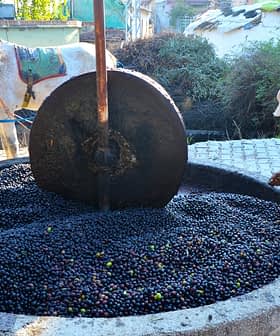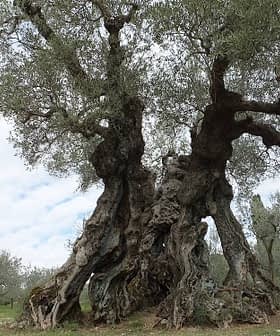The ruins of the ancient city of Amos overlook Kumlubük bay on the Bozburun peninsula in south-west Turkey. My family and I were guests at the nearby Dionysos hotel. One afternoon my husband and I walked from our red-roofed villa through groves of fruit and olive trees to the south-east corner of the hotel grounds and on down the mountain to Amos. It took us about twenty minutes going there, but longer to climb back up.
The uneven path is marked by red circles painted on rocks, and winds through a dense mixture of myrtle, gorse, holly, carob and wild olive with delicate pink cyclamen blooms poking through the rocks here and there. We met nobody on the path, but Annabel Elsdon, the hotel’s guest relations manager, had told us that wild animals also use it, and we did see places where the earth had been dug up by wild boar in their search for food. Annabel told us that porcupines, tortoises, foxes, hares and a pair of eagles also live on the mountainside, but we didn’t see any of them on our walk, sadly.
When we arrived at Amos we found that we had the place to ourselves. We walked through groves of wild olive trees, which I imagined were descended from trees cultivated by Amos’ original inhabitants. There were signs in Turkish and English explaining the history of the place, and we read that the grey stone city walls we could see around the settlement date from the Hellenistic period (323 BC — 31 BC) and were originally four meters high and two meters across. We strolled through the ancient ruins to the amphitheater which has 1,300 seats and panoramic views across the Mediterranean towards the distant city of Marmaris.
Ahmet Şenol, the hospitable owner of the Dionysos estate, created the hotel out of the mountainside — it took just nineteen months to excavate the rocky terrain and complete the hotel, building around mature olive trees as well as planting new ones. Today his estate boasts around 1,500 olive trees, which produce high quality extra virgin olive oil. The day before our walk, Ahmet had told me that excavations at Amos had found a third century BC land rental agreement on a stone tablet. The agreement stated that the tenant had to plant an olive tree every year. As I sat in the stone terraces of the amphitheater looking out across the Mediterranean I reflected that some values are timeless, and Ahmet is continuing an ancient tradition.









